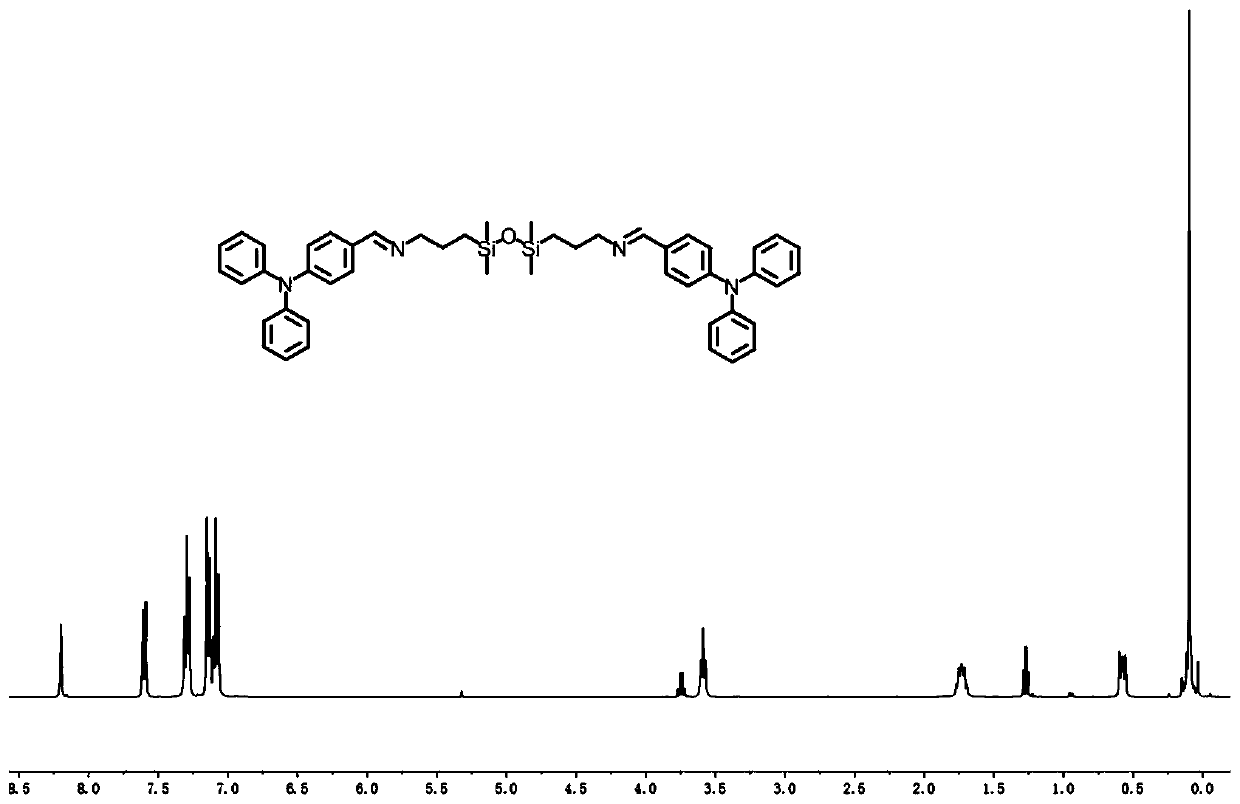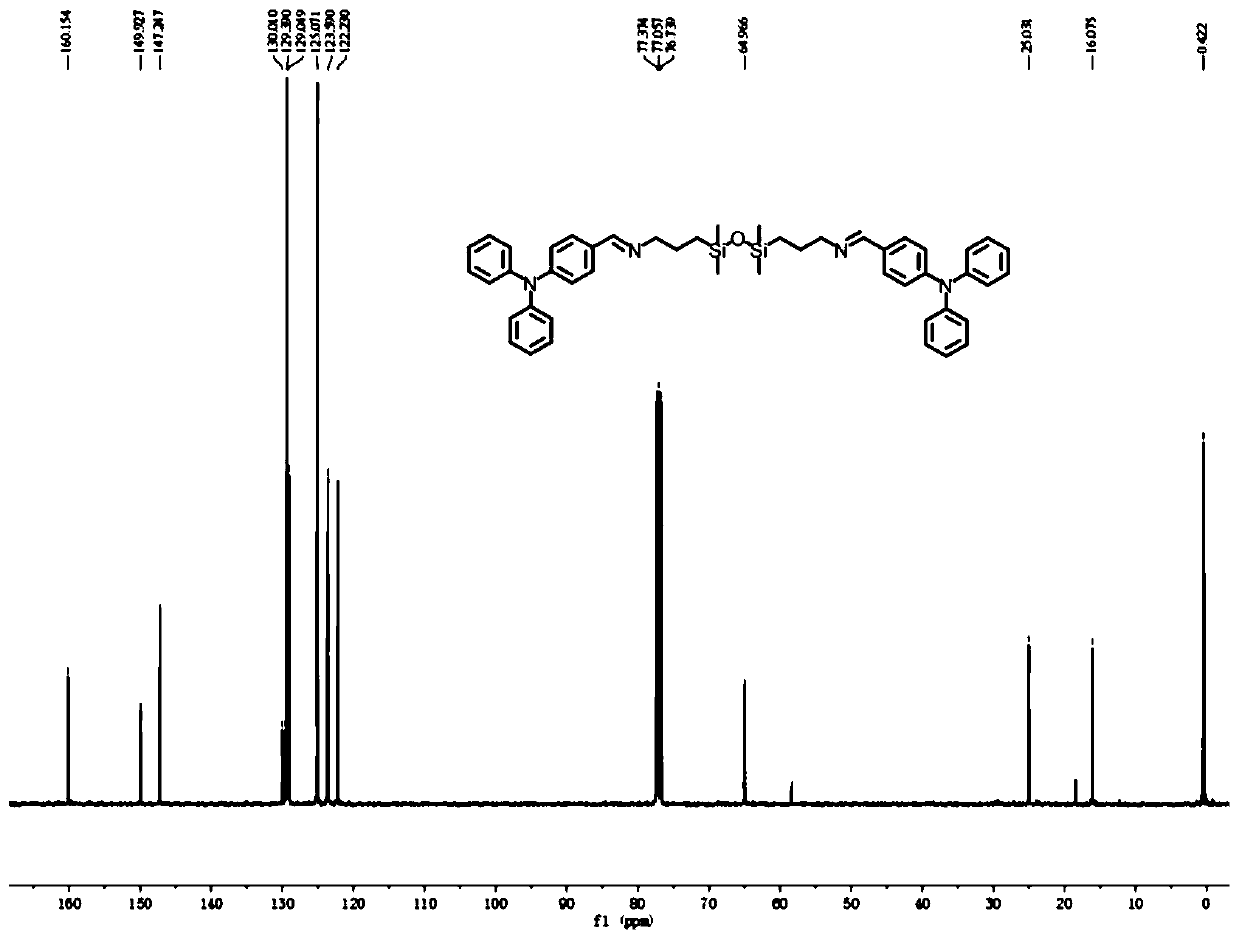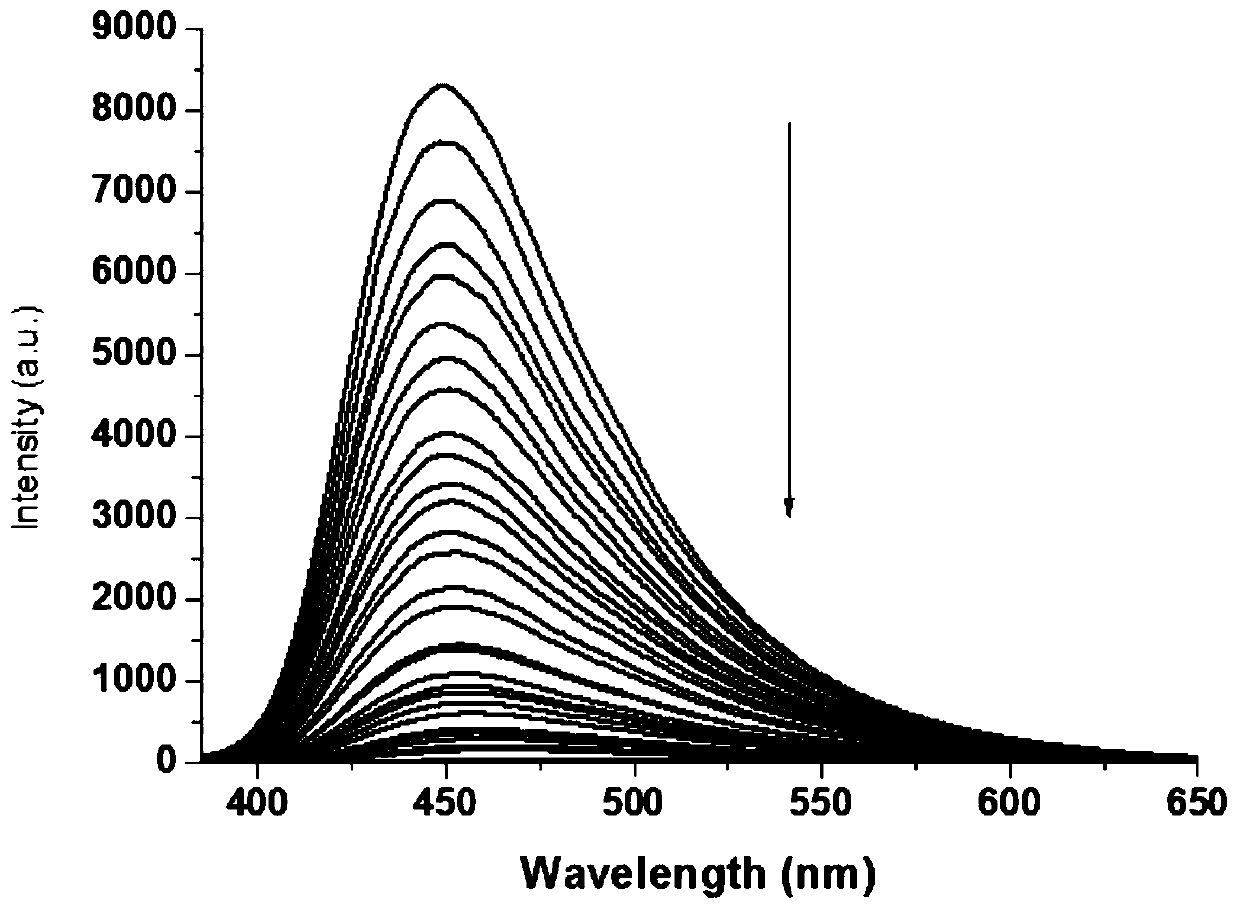Organic silicon Schiff base fluorescent probe and application thereof
A fluorescent probe and silicon Schiff base technology, applied in the field of analytical chemistry, can solve the problems of lack of reports on bioimaging applications, and achieve the effects of enhancing the ability to penetrate cell membranes, easy to popularize, and good photostability
- Summary
- Abstract
- Description
- Claims
- Application Information
AI Technical Summary
Problems solved by technology
Method used
Image
Examples
Embodiment 1
[0027] Example 1 Synthesis of Fluorescent Probes
[0028]
[0029] Aminopropyldisiloxane (1.24 g 5 mmol), 4-dianilinobenzaldehyde (2.73 g 10 mmol) and dichloromethane (40.0 ml) were added to a 100 mL single-necked flask at a ratio of 1.0:2.0, and Appropriate amount A 4 Molecular sieves were used to remove the water produced in the reaction, and stirred with a magnetic stirrer for 24 hours at room temperature. After the reaction was completed, excess impurities were removed by filtration with suction filter paper, and excess solvent was removed by rotary evaporation to obtain compound P 1 , and the yield was 86%. The fluorescent probe Psi was prepared. The above fluorescent probe Psi 1 H NMR spectrum see figure 1 , 13 C NMR spectrum see figure 2 .
Embodiment 2
[0030] Embodiment 2 Fluorescence probe pair Cr 6+ the response to
[0031] The fluorescent probe Psi was made into a 10 mmol / L stock solution with ethanol as a solvent, and 2 μL of the stock solution was dissolved in 2 mL H 2 O (25 μM PBS buff, pH = 7.4, 10% ethanol) solution, 10 mmol Cr with deionized water 6+ , taking different concentration gradients of Cr 6+ (0-25 μm) was added to the well-mixed ionic liquid, and the fluorescence performance of silicone Schiff base Psi (λ ex =365 nm, slit width: excitation 5 mm, emission 5 mm), the results are shown in image 3 . With Cr 6+ Fluorescence intensity decreased with increasing concentration.
Embodiment 3
[0032] Example 3 Selectivity of fluorescent probes to different ions
[0033] Use ethanol as a solvent to prepare a 10 mmol mother solution, take 2 μL of the mother solution and dissolve it in 2 mL H 2 O (25 μM PBS solution, pH = 7.4, 10% ethanol) mixed solution, 15 equivalents of various metal ions were added to the mixed solution to fully react, and the fluorescence performance was tested with a fluorescence spectrophotometer. (λex =365 nm, slit width: excitation 5 mm, emission 5 mm) see Figure 4 , 1-16 are blank, Cr respectively 6+ , Fe 3+ , Mg 2+ 、Al 3+ , Sn 2+ , Zn 2+ 、Cu 2+ 、Ni 2+ 、Ba 2+ , Ca 2+ 、Cr 3+ , Mn 2+ 、Cd 2+ 、Ag + 、Co 2+ . Depend on Figure 4 It can be seen that the fluorescence intensity of the fluorescent probe is basically not affected after mixing with other substances, while the addition of Cr 6+ Afterwards, the fluorescence intensity decreased significantly.
PUM
 Login to View More
Login to View More Abstract
Description
Claims
Application Information
 Login to View More
Login to View More - R&D
- Intellectual Property
- Life Sciences
- Materials
- Tech Scout
- Unparalleled Data Quality
- Higher Quality Content
- 60% Fewer Hallucinations
Browse by: Latest US Patents, China's latest patents, Technical Efficacy Thesaurus, Application Domain, Technology Topic, Popular Technical Reports.
© 2025 PatSnap. All rights reserved.Legal|Privacy policy|Modern Slavery Act Transparency Statement|Sitemap|About US| Contact US: help@patsnap.com



